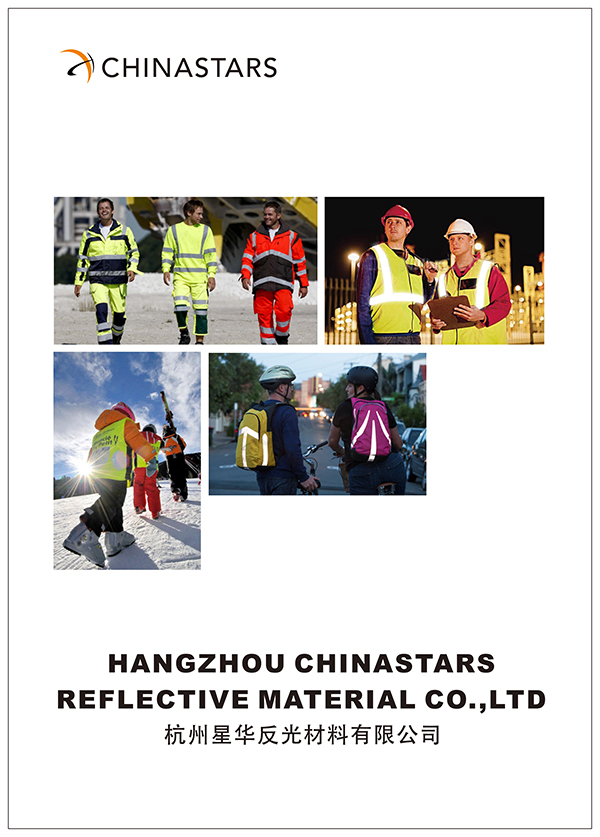
This area is dedicated to file downloads. Here we offer information about international standards for our products. You can download our product certificates and catalogue as well.
Below is our reflective material catalogue, click on the link and it will provide you a quick overview of most of the products we have now. You can either browse it online or download the catalogue in PDF format. To view PDF documents, you may need the free Adobe Acrobat Reader.
Our products are certified by international standards. Here you find a list of product certificates, click on the certificates to view full size or download in PDF format. To view a pdf document, Adobe Acrobat Reader 5.0 or greater is required. Our certificates are regularly updated, please contact our service staff or send us emails to get the latest and updated certificates.
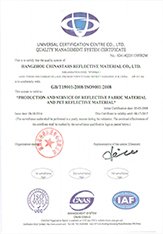
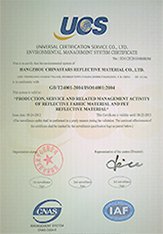
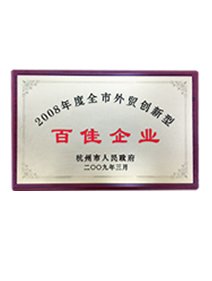
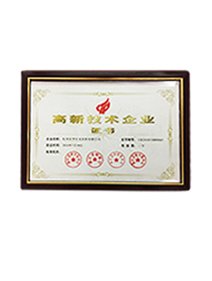
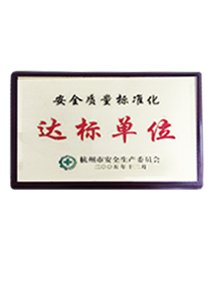
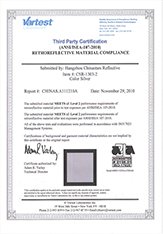
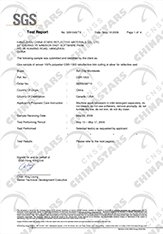
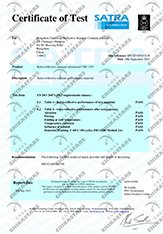
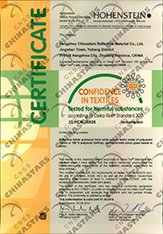
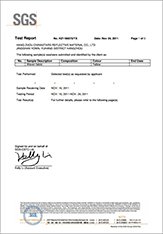
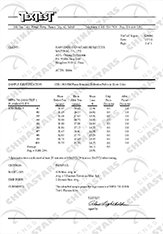

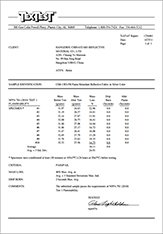
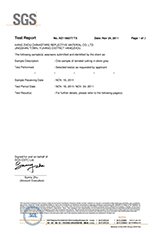
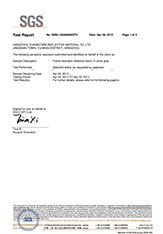

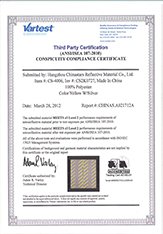
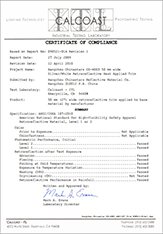
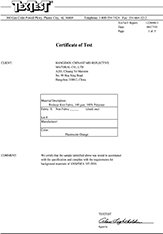
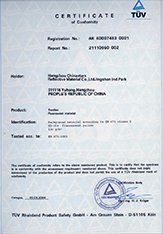
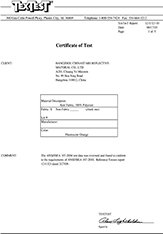
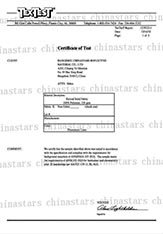

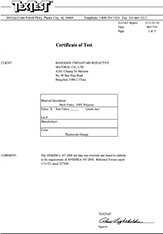
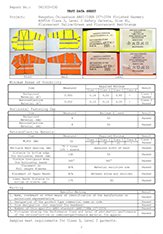
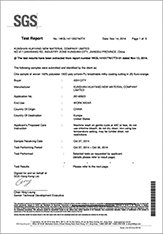
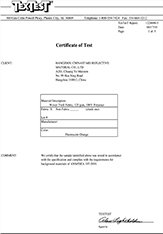
Below is the list and brief introduction of commonly used international Standards in this industry. For more detailed information, please contact our customer service team.
The International Organization for Standardization released on 28th June 2013 the new EN ISO 20471:2013 standard for the test methods and requirements of high visibility clothing. All EEC Type Examination Certificates based on EN 471 for high visibility clothing became invalid on 1st October 2013 regardless of any other mentioned validity date. Requirements are included for color, retro reflection and Physiological performance as well as for the minimum areas of visible material in high visibility clothing. To get more detailed information on requirements of EN ISO 20471, please contact our service staff or send us emails.
ANSI/ISEA 107-2010 is the American National Standard for High-Visibility Safety Apparel and Headwear. This standard provides an authoritative guide for the design, color, photometric and physical performance, use and test methods of high-visibility safety apparel including safety vests, hi vis jackets, bib coveralls, pants and harnesses. Based on different work environment, the standard classified the performance into three classes. To get more detailed information on guidance provided by ANSI/ISEA 107-2010, please contact our service staff or send us emails.
AS/NZS 1906.4:2010 is the joint Australian/New Zealand Standard for retro reflective materials and devices for road traffic control purposes. It specifies the photometric, colorimetric and physical property requirements for high-visibility materials to be used in high visibility safety clothing, rather than the clothing themselves. The design requirements for high-visibility clothing are specified in AS/NZS 4602.1. For more detailed information, you’re welcomed to consult our service staff online or by email.
CAN/CSA Z96-02, the high visibility apparel standard by Canadian Standards Association, provides requirements for three levels of retro-reflective materials to be used in high-visibility apparel relating to the minimum areas and placement of these materials. It also specifies requirements for three classes of high visibility clothing. CSA Z96-02 approved high visibility clothing shall be worn by all workers who are likely to exposed to the traffic hazards. For more guidance provided by this standard, please don’t hesitate to contact our service staff.
BS EN 1150:1999 is the British-adopted European standards for non-professional use visibility clothing, which specifies the optical photometric, colorimetric and physical property performance of retro-reflective material, as well as the requirements for high visibility clothing designed for non-professional use and to be worn by juveniles or adults who want to enhance the visibility in any light conditions. Consult our service staff for detailed information into the standards.
EN ISO 14116:2008 supersedes BS EN 533:1997 in providing more comprehensive information on the performance requirements for the limited flame spread properties of materials and material assemblies used in protective clothing in European countries. The protective clothing is intended to protect workers against accidental contact with small flames and without significant heat hazard. For protection against heat hazards, we are glad to introduce you EN ISO 11612: Protective clothing against heat and flame, the revised version of EN 531:1995: Protective clothing for workers exposed to heat.
ASTM F1506, standard performance specification for flame resistant textile material testing and apparels made from compliant materials. The protective clothing are to be used by electrical workers exposed to momentary electric arc and related thermal hazards. Specific requirements for flammability test before and after 25 washes, arc thermal performance test, labeling, thread, and closures and periodical retesting are included in the specification. If you are interested to know more information about this standard and our product compliances, please contact our service staff.
NFPA 701 is a national standard of United States developed by the National Fire Protection Association (NFPA). It establishes test methods to assess the propagation of flame of various textiles and films under specified fire test conditions. NFPA has various standards depending on how the fabric will be used. In the case of draperies, curtains, and similar hanging textiles, NFPA 701 applies. The testing measures the ignition resistance of a fabric after it is exposed to a flame for 12 seconds. The flame, char length, and flaming residue are recorded to meet certain criteria. For more detailed information, please consult our service staff online or by email.
BS EN 13356: 2001, the British standard for visibility accessories for non-professional use, specifies the optical performance requirements for accessories which are to be worn, attached to or carried by people and designed for non-professional use. Visibility accessories complying with this standard are intends to improve the road users’ visibility and enhance their safety while using the product. In case of any questions on details of this standard, our service staff is ready to answer them for you.
The OEKO-TEX Standard 100 is an independent testing and certification system for textile raw materials, intermediate and end products at all stages of production. That means in addition to the outer material, the sewing threads, linings, prints etc. as well as non-textile accessories such as buttons, zip fasteners, rivets etc. also have to comply with the criteria. OEKO-TEX testing for harmful substances including illegal substances, legally regulated substances, known harmful (but not legally regulated) chemicals and parameters for health care. According to the actual use of the textile, there are four product classes. The more intensive the product contacts to the skin, the stricter the human ecological requirements to be met. For more detailed information on the standard and our product certificates, you’re welcomed to contact our service staff.